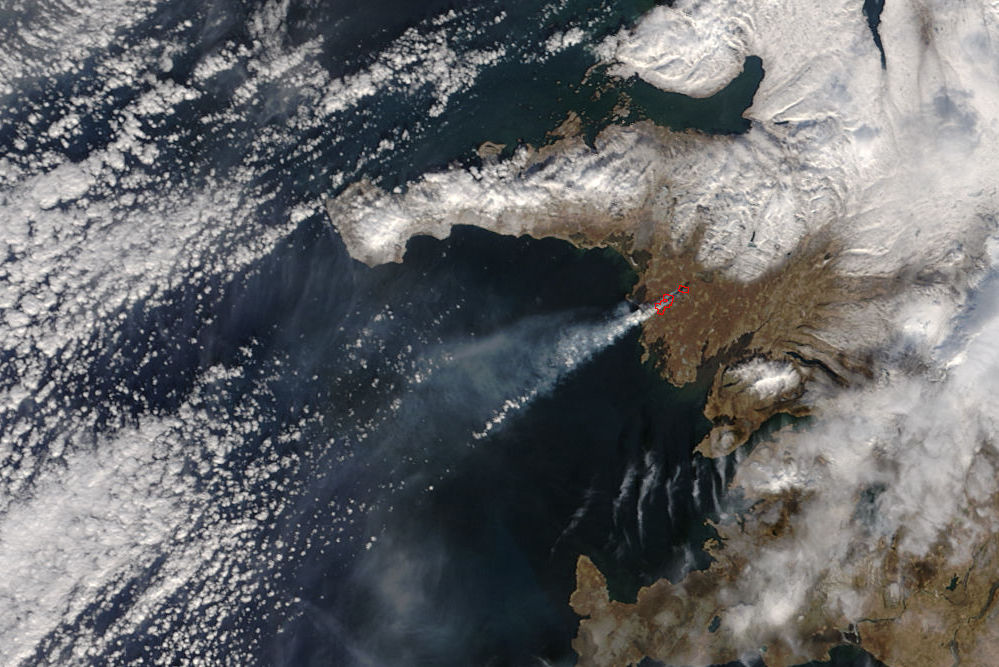Iceland’s first ‘danger alert’ for a wildfire could be a sign of things to come
Drier weather and more things that can burn are putting Iceland at increasing risk of large wildfires.

Where there is fuel, there is the potential for fire. So, when Icelandic authorities, in May, issued that country’s first “danger alert” in connection with a rash of wildfires, it came as little surprise to those who have watched with concern as summer homes have been built and as the arrival of invasive species of plants and decreased sheep grazing has seen vegetation accumulate.
Iceland may not seem like the ideal place for wildfires, but isolated fires are not uncommon during its relatively dry springs. During a particularly dry stretch of weather that began in April, there were a reported 70 wildfires through the end of May.
Most of them were put out with little effort. The largest, though, in the Heiðmörk forest, outside Reykjavík, was large enough and difficult enough to access that a coast guard rescue helicopter, equipped with fire-extinguishing equipment, was called in to assist.
It could have been worse: At its greatest extent, the danger alert — which is put out to let people know that they, their animals or their property may be threatened by a disaster — covered half of the country, and the conditions, according to Þröstur Þorsteinsson, a geophysicist with the University of Iceland, were ripe for a repeat of a 2006 Mýrar fire that burned 73 square kilometers, the country’s largest wildfire ever.

Because that fire occurred in parched wetland on the western coast, it did little damage and went “largely unnoticed,” he says. It also went largely unacted upon. In part, because no homes or infrastructure were damaged, and, in part, because people in Iceland have come to see vegetation as something the country needs more of, not less.
“We are trying to reforest some parts of the country,” Þorsteinsson says, “so it sends a mixed message when we tell people to clear areas around their homes.”
Weather data show that Icelandic springs have become drier in recent years. Although global warming is a likely reason, scientists underscore it is too early to tell if this is indeed the case. Current predictions for how weather patterns will change with the climate suggest Iceland will see more rain overall, but springtime can be expected to become increasingly drier there.
An increase in the number of fires, Þorsteinsson reckons, will make people more aware of the danger, but he is concerned that it will take the loss of property or damage to infrastructure before public safety authorities reassess how to fight large fires.
[‘Zombie fires’ helped make this worst wildfire season ever recorded in the Arctic]
Currently, most of the responsibility for putting out wildfires lies with local fire brigades. But they are ill equipped to fight fires in areas with no infrastructure. Moreover, it is unclear how local and national authorities would work together in the event of a major fire.
“We are prepared to fight wildfires,” he says, “but they are the wildfires we saw in the past.”
The situation, he believes, bears an “uneasy” parallel to the state of Iceland’s avalanche preparedness prior to a series of five avalanches in 1994 and 1995 that claimed 37 lives. At that time, risk zones were determined based on where avalanches had occurred, not where they were likely to happen.
In response to more frequent and more extreme wildfires in Northern countries, the Arctic Council is looking into ways for its member countries to help each other understand the causes and the impact of wildfires, and, where possible, to provide assistance when fires break out.
[Hikers warned as Greenland wildfire burns out of control]
The work, being led by the Gwich’in Council, is expected to lead to an agreement similar to existing Arctic Council agreements pledging member countries to help each other in the event of an oil spill or an accident at sea.
While wildfires, according to Edward Alexander, one of the Gwich’in Council’s co-chairs, are natural, and, in many cases, beneficial, big fires are now happening in countries that have less experience dealing with them than the U.S., Canada and Russia.
All three of those countries have federal forest services that are responsible for controlling wildfires. That, Alexander says, is in contrast to Sweden, Norway, Iceland and Greenland, where responsibility for fighting wildfires is in the hands of municipal authorities, who may have trouble coordinating their approach towards fighting and preventing wildfires.
“There is question of who is responsible and who coordinates a response. Who decides whether to suppress fires entirely or whether to let small fires burn? Fire in many places is seen as something that should be avoided at all costs, but fire can also be used as a tool,” he says.
[During Finland meeting, a discussion of Iceland and fire and the Arctic Council’s future]
In addition to getting rid of the brush and other fuel that could cause major fires, small fires, according to Alexander, have been used by the Gwich’in as a way to fertilise the soil in the spring.
Iceland’s bushfires that are often close to property require a different approach than North America’s often remote forest fires, he admits, but addressing both requires understanding what’s burning and why it’s burning and what its consequences might be, he says.
“It might not be possible to let fires burn in Iceland, but fires are becoming a pressing concern throughout all of the Arctic on a magnitude we haven’t seen before. Sharing what we know about fire will help us all get a full picture of what is happening and what we can do about it.”